Review for Utawarerumono: Volume 6 - A Song For Posterity
Introduction
I feel like I have been watching Utawarerumono for months instead of weeks, although in this case that is a statement of praise rather than a comment on any potential properties of boredom within the series. This is the diametric opposite of boring, it's just that there is so much going on, so many plot developments and character evolution, that it seems impossible to be contained within a brief run of just 26 episodes. Surely there must be more room to tell a story this epic. It's a TARDIS of a show, and as each development takes it into ever more fantastic territory, it's as if the show keeps regenerating into something new. To absolutely murder a metaphor, with this final volume about to explore even wilder territory, I guess we'll find out if Utawarerumono ends up as Tom Baker, or as Sylvester McCoy.
Utawarerumono is a fantasy series set in a strange world. It's based on a PC game, but before you recoil in horror, it's one of those narrative adventure PC games that the Japanese are so fond of, barely interactive animated storybooks, with sex scenes. This anime ditches the sex to produce something a little more appropriate for a broader audience. This is a strange world, populated with dog-eared people, strange animals, very real deities, oppressive governments, and on the verge of war. It's in this world that a masked stranger awakes. Hakuoro has no memory of his past, but a mask is affixed to his face, impossible to remove. He wakes in the village of Yamayura, healed and nursed back to health by a young girl named Eluluu, and is taken to heart by the kindly village people. Against all the adversities and challenges this harsh world throws against the people of Yamayura, this noble, enigmatic man becomes a beacon of hope, and a source of strength. But this is just the first step for Hakuoro to take towards his destiny of changing the world.
The concluding episodes are presented on this disc from ADV.
23. Where The Heart Lies
Kunekamun continues its onslaught, despite Hauenka's defeat previously. Hien demands that the mission of unification is completed, but when Genjimaru advises a cessation of hostilities, Kuuya refuses, claiming that she has gone too far to stop now. It's the last straw for Genjimaru. Hakuoro has problems too, there is a sudden distance between him and Eluluu, she obviously knows more than she is telling, and the memories keep returning for Hakuoro. This last flashback is even more detailed, a masked man waking in a technologically advanced laboratory, a scientist named Mizushima, and a furry eared experimental subject #3510, who the masked man names Mikoto, and who looks and sounds just like Eluluu. But then there arises an opportunity to end the war, as a defector from Kunekamun arrives, offering to lead Hakuoro's forces against his former people.
24. On the Path of Destruction
The war intensifies, and once more Hakuoro's forces face implacable, ensorcelled foes in battle. The winged advisor who had stood at Niwe's side previously, is now working with the Kunekamun people, fulfilling an ancient pact. It's a pact that Genjimaru has broken with his defection, and seeing him at Hakuoro's side spurs the winged man, Dii into action. He teleports Hakuoro, Eluluu, and Genjimaru directly to Kuuya's palace, where the war will be decided once and for all. Strangely however, he can't face Hakuoro directly, he has to use proxies. The proxy he chooses is Camus.
25. Traces of an Ancient Dream
Hakuoro demands the truth from Urutori; he wants to know just who Camus really is, and how she is related to Dii. The truth is astounding, if incomplete. This much is certain, Hakuoro is determined to rescue Camus, and he prepares for what will probably be his final quest, leaving Oboro in charge. Of course no one is prepared to let him face Dii alone, and everyone heads to Onkamiyamukai together. It's where Dii and Camus are, but it's also where the missing pieces of Hakuoro's past lie. Depending on the choice he makes, Hakuoro may wind up changing the world forever.
26. Utawarerumono: Him Whose Song is Sung
The conclusion.
Picture
This being a Region 1 disc, Utawarerumono gets a 1.78:1 anamorphic transfer of the NTSC variety. It means a slightly lower resolution than PAL discs, and a greater prevalence of aliasing, but it also means that the image is clear, sharp, and colourful, and the animation is smooth, and free of ghosting and judder. Utawarerumono is an interesting animation, period fantasy as it is, it reminds me somewhat of Inuyasha, with its simplicity of character designs, and wholesome bright, primary colours. That said, there is something of a more atmospheric aesthetic to the animation, it's much more detailed and vivid, and with the fantasy setting, there's something Ghibli-esque about it, reminiscent of films like Nausicaa and Princess Mononoke. All in all, it's a very pleasant show to watch. That's with the exception of crowd and battle sequences. Where there are a lot of people on screen at any one time, and shown at a distance, the animators have used something akin to a 3D RTS graphics engine to render the crowds in CGI, and the graphics do tend to stick out like a sore thumb. Also when the camera gets a little too close, the uniformity of features becomes apparent.
Sound
Utawarerumono comes in DD 5.1 English and DD 2.0 Japanese stereo, along with optional translated subtitles, and a signs only track. In a nice move, the episode titles get a subtitle translation, but in an unconventional font that very much suits the look of the show. The dialogue is clear in both versions, and the show gets some very earthy, folk style music, along with a couple of very pleasant theme songs. I was happy enough with the Japanese version, which had some memorable character voices. Not so much for the English dub, which is pretty run of the mill for anime, not exactly standing out, but not really all that awful either.
Extras
Utawarerumono gets the usual jacket picture and animated menu, and this being a Region 1 disc, it also autoplays with ads for Anime Network and the now dead Newtype USA magazine.
Inside the very shiny green Amaray style case, you can read an eight-page booklet, which offers interviews with music director Susumu Aketagawa, series director Tomoki Kobayashi, and voice of Hakuoro, Rikiya Koyama.
On the disc you can find an eight-page glossary, explaining the terms used in the show, and detailing some of the characters that you'll encounter.
You get another dose of Omake Theater, which this time lasts 10 minutes. It's a comedy diversion in the Utawarerumono universe, and this final instalment tells more of Touka's adventure with her little doll, which has just been painstakingly repaired.
The final Q & A lasts 19 minutes, and Hakuoro and Eluluu answer viewer (and character) questions about the show over appropriate clips from the episodes.
The Extended Episode Previews are just that, and there are 2 minutes worth here for all four episodes. These previews, the Omake Theater, and the Q & A featurette are in Japanese only.
There is a 30 second Character Art Gallery slideshow, as well as the textless credits, and a 2-minute trailer for the Utawarerumono Playstation 2 game.
Finally there are trailers for Xenosaga, Air TV, Innocent Venus, Le Chevalier D'Eon, 009-1, and Red Garden.
Conclusion
The defence of 'spoilers' is an easy copout for a reviewer seeking to take it easy with a review. Refusing to talk about the movie or episodes just seen, and just waffling around the issue is an easy way to nip off a quick review and then sit down with a nice cup of tea. Except that on occasion, spoilers are indeed a significant problem to a reviewer. Take the final volume of Utawarerumono as an example. I'd love to talk about what happens in the final episodes, go into detail about all those eyebrow-raising developments, but I really shouldn't. Spoilers are the last thing that Utawarerumono needs at this point, and I would be faced with all kinds of profanity if I let the cat out of the bag now. Which is a shame, as I would really like someone to share a 'did you see what…' moment with. It's a rare watercooler that has anime fans congregate around it.
This much I am prepared to say about Utawarerumono: Volume 6. This, even more than the previous volume, is very much an 'either or' affair. You either get its dramatic pace, its increasingly bizarre revelations and the ending that shows no restraint whatsoever, in encompassing the most stunning twist of fate yet, or you remain incredulous and dumbfounded to the last. I wouldn't be surprised if a fair number of jaws are left hanging open, and cushions thrown at the television screen in exasperation. This isn't an ending for everyone, and by implication, Utawarerumono isn't a series for everyone. I have to say however that I loved it; I thought it was brilliant, and I thought that given the pace of story development, the way that the events unfolded in the story, that no other conclusion could have done the show justice. For me, these final episodes were pitch perfect, and hit all the right notes in sending off this diverse collection of characters, and sealing the lid on what has been a fast-paced, involving and compelling story.
It's the characters that make Utawarerumono work for me. The story may get into farfetched climes, but the characters remain grounded and approachable. You can comprehend what Hakuoro, Eluluu, Aruruu and the others go through, as the writing for the characters tries to keep things realistic and believable, and universal themes of love, joy, loss, fear, and hate remain constant no matter what. The people in this series act as their consciences dictate, not peculiarly to serve the narrative, so even when the world is undergoing bizarre upheavals, you can relate to how people react. It's because you feel their triumphs and tragedies that you probably will get a little moist-eyed as the story concludes, and the final scene will leave you with a smile on your face. Yet it's an ending that seen on paper, out of context would elicit no such response, and were I to spoil it here, you would have no interest in this series whatsoever.
But I accept Utawarerumono's obvious faults, and instead laud the great storytelling, and the well-written characters that have made watching this series so addictive. Forget the cumbersome title, and don't worry too much about the ending, as overall, this series is entertaining and fulfilling. As one of ADV UK's final releases, they certainly went out on a high with this one, and with the show's volumes ridiculously cheap in the UK, you don't have much to lose by giving it a try.
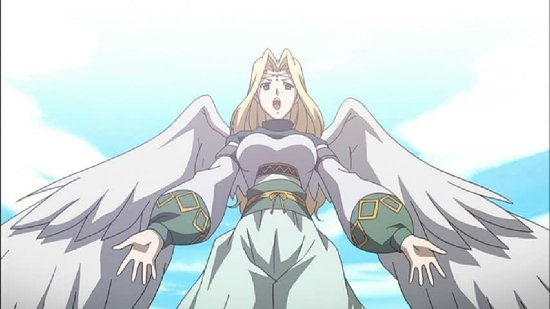
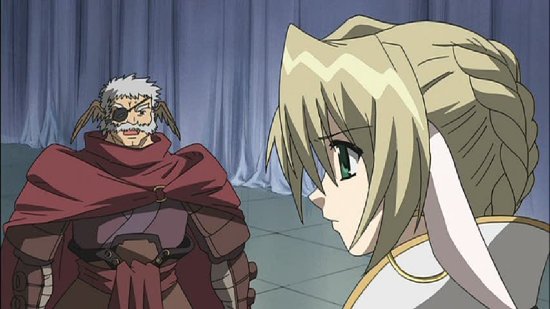
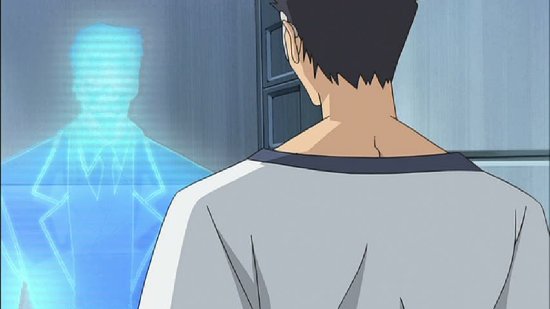
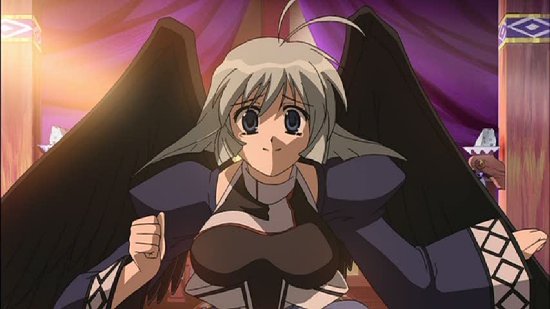
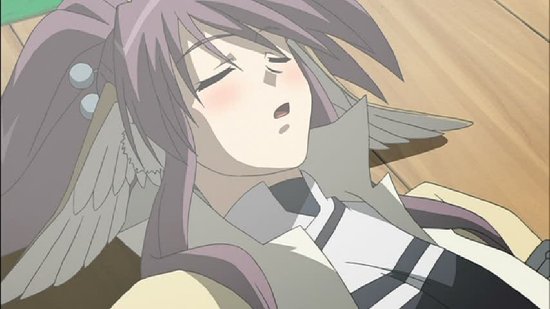
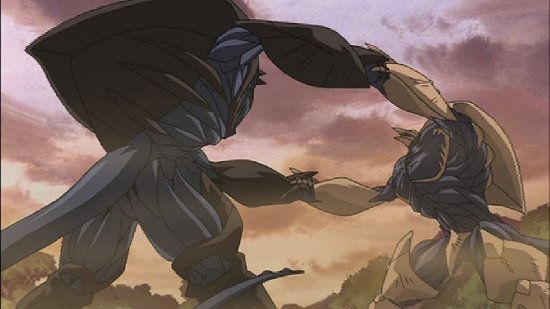
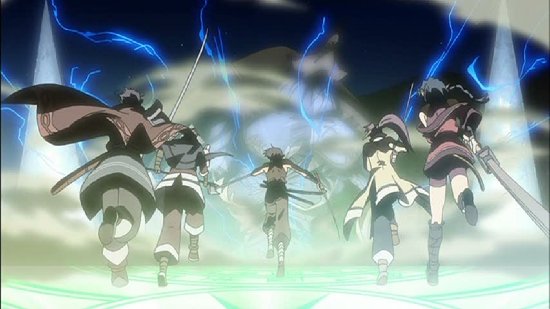
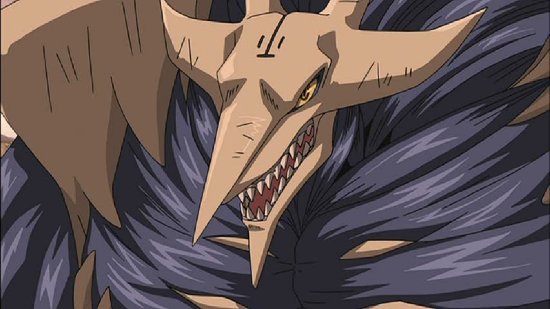
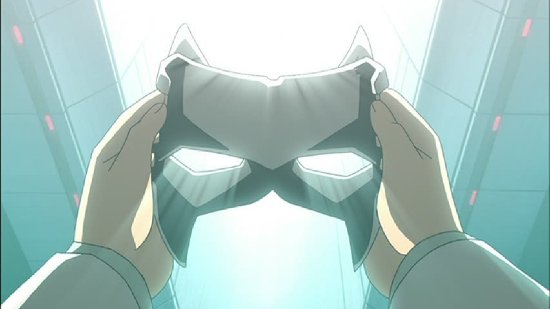
Your Opinions and Comments
Be the first to post a comment!